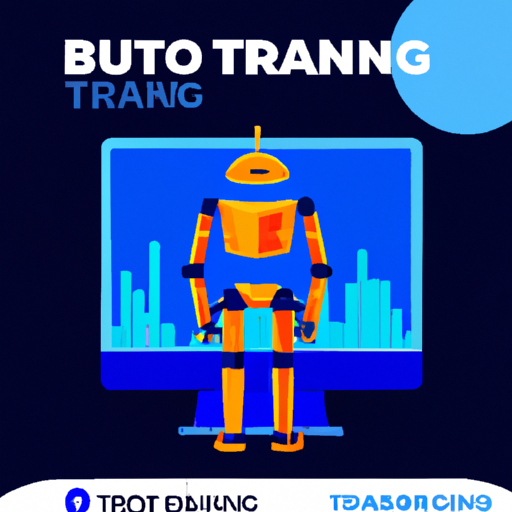Building A Trading Bot: The Future Of Automated Trading
Interested in building a trading bot? You’re not alone.
In recent years, the financial world has seen an explosion of interest in automated trading.
As technology advances, more and more traders are turning to trading bots to improve their trading strategies and efficiency.
But where do you start?
In this article, we’ll walk you through the essential steps for building your own trading bot, covering everything from understanding the basics to implementing advanced features.
Understanding Trading Bots
Before diving into the nitty-gritty of building a trading bot, it’s crucial to understand what these bots are and how they function.
A trading bot is an automated software program that interacts with financial exchanges directly or via APIs.
It places trades based on predetermined logic and strategies without human intervention.
These bots use algo trading software to analyze market data like price, volume, and time.
Once they identify trade opportunities based on preset algorithms, they execute trades automatically.
The Benefits Of Trading Bots
Let’s face it: humans have limitations.
We get tired, make emotional decisions, and can’t monitor markets 24/7.
Trading bots solve these problems by offering several benefits:
– Consistency: Bots adhere strictly to pre-set rules.
– Speed: Bots execute trades faster than humans.
– Efficiency: They can manage multiple accounts or strategies simultaneously.
– Emotionless: Bots operate without emotional interference.
Now that you’re sold on the idea of having a trading bot let’s discuss how you can build one yourself.
Planning Your Trading Bot
Building a successful trading bot requires meticulous planning.
Here’s a roadmap to help you get started:
Define Your Goals
Ask yourself why you want to build a trading bot. Is it for passive income? Hedging risks? Or perhaps experimenting with different algorithmic trading strategies?
Understanding your objectives will guide your development process.
Choose Your Market
Decide which market you’ll trade in – stocks, forex, crypto? Different markets have different characteristics and volatility levels.
Selecting your market will also determine the type of data you’ll need for analysis. For instance, if you’re into forex, platforms like Metatrader 4 offer robust tools for algo trading software integration.
Select A Strategy
The strategy is the backbone of any successful trading bot. Common strategies include arbitrage, trend following, mean reversion, and sentiment analysis. Choose one that aligns with your goals and conduct thorough backtesting before implementation.
Gathering Data
Data is king in algorithmic trading. Your chosen strategy will dictate what kind of data you need – historical prices, real-time feeds, social media sentiments?
You can gather this data from various sources such as financial news websites or directly from exchanges via APIs.
Building The Core Components
Now let’s delve into actual development:
Programming Language
The first thing you’ll need is coding knowledge. Popular languages for developing a trading bot include Python due to its extensive libraries and ease of use or JavaScript for browser-based applications.
APIs And Integration
APIs allow your bot to communicate with exchanges or brokers by sending requests and receiving data in real-time.
Platforms like Binance offer comprehensive API documentation suitable for beginners looking at cryptocurrency markets while others like Metatrader 4 provide similar features tailored towards forex traders.
Ensure robust error handling when working with APIs since connectivity issues could lead to unintentional trades or losses!
Designing Your Algorithms
The next step involves designing algorithms based on your selected strategy:
1) Identify Entry & Exit Points: Define conditions under which trades should be entered/exited.
2) Risk Management Rules: Establish stop-losses/take-profits levels.
3) Position Sizing: Determine how much capital will be allocated per trade (e.G., Fixed amount vs percentage-based).
Backtest extensively using historical data before deploying live capital!
Testing And Optimization
Even after extensive backtesting comes another crucial phase – forward testing:
Deploy initially within simulated environments provided by most brokers/exchanges without risking real money until satisfactory results are observed over extended periods under varying conditions!
Once confident enough – move onto live testing but start small!
Use optimization techniques such as machine learning models if dealing with complex multi-variable systems requiring continuous adjustments/improvements over time!
Monitoring And Maintenance
Building doesn’t end once deployed!
Continuous monitoring is imperative ensuring everything runs smoothly since markets constantly evolve requiring periodic tweaks updates adapting changing dynamics preventing unforeseen mishaps/errors occurring live environments potentially disastrous consequences avoided timely interventions adjustments made necessary keeping ahead curve competition edge always intact ready seize opportunities arise swiftly effectively maintaining profitability sustainability long-term success assured guaranteed comprehensive efficient management system place proactive approach adopted consistently diligently unwaveringly passionately driving forward towards ultimate goals aspirations set forth envisioned dreamt realized accomplished fulfilled beyond wildest expectations hopes dreams desires ambitions achieved celebrated enjoyed revelled lived fully freely joyously triumphantly magnificently spectacularly forevermore eternally!!!
Stay tuned next week where we’ll explore advanced topics related automating entire portfolio management using sophisticated AI-driven technologies revolutionizing industry ways unimaginable today tomorrow beyond!!!

